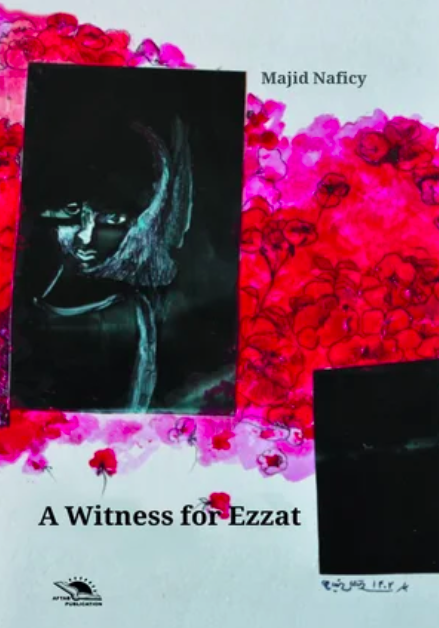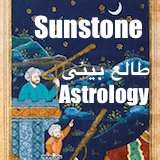Public Page
Interests: http://www.iranian.com/main/member/majid-naficy http://www.iranian.com/mnaficy
Joined on December 03, 2012
Catching Fire: The Los Angeles Wildfires

Everyone will receive one contributor's copy. I am sorry that I cannot offer more than that, but as you all know, I am not going to be compensated for any of the time or money invested in this book. All future proceeds will be donated. So I am hoping that most everyone will be able to come to one of the events, or pick up the book somehow at a designated time and place. But if you do need to have your contributor's copy sent to you, please let me know and I will be happy to get it to you.
Three Rooms Press in New York is partnering with Rose of Sharon to distribute the book. We cannot possibly thank Kat Georges and Peter Carlaftes enough. Kat also did an absolutely superlative job with the layout and design. Attaching a copy of the fantastic cover she created using a photograph taken by Michelle Bitting's husband Phil Abrams.
We would like to share with you all one of the blurbs that we have received so far. More to come:
"In this time of climate change and the apocalyptic weather events it can bring, we have moved beyond writing about its devastation—fires, floods, magna earthquakes—to write out of the experience itself. In Catching Fire: The Los Angeles Wildfires, poets who live where the flames consumed land, treasure and human life give us poems as powerful as the destruction they survived. But this anthology offers a different sort of power, raw and intimate. Art redeems the story, from this book’s cover image, in which the remains of a charred typewriter confronts us, to the final poem. I hope this book finds the vast readership it deserves."
—Margaret Randall, author of The Calendar’s Whim and Letters that Breathe Fire.
Distribution info below:
Amazon:
https://www.amazon.com/Catching-Fire-Angeles-Wildfires-February/dp/1513677713/ref=sr_1_3
Barnes & Noble:
https://www.barnesandnoble.com/w/catching-fire-sa-griffin/1148866826
More will be added over the next few weeks as the book goes to print.
ORDERING: Bookstores and libraries can now order the book via Ingram.
INDUSTRY ADVANCE GALLEYS: The advance galley is available for booksellers, librarians, and others on the book industry platform Edelweiss:
https://www.edelweiss.plus/?sku=1513677713&g=4400
Richard and I are working on booking gigs and have already booked three readings, working on more. Please let us know if you have any suggestions.
Beyond Baroque Literary Arts Center, Venice, January 31, 2026, 3-6pm
Wacko, Hollywood, February 22, 2026, 3-6pm
Library Girl, Santa Monica, March 8, 2026, 7pm
Please let us know if you might be interested in participating on any of these shows. Either reply to this email or call me: (323) 252-0424.
With 58 contributors, we will be trying to get everyone booked on at least one event. Not everyone will be able to be on all of the shows, so I hope that you all understand and will come out to support one another as best you can. There will be readings throughout the coming year. Presently waiting to hear back from Altadena Public Library and LitFest in the Dena.
Thank you all so very much for being a part of Catching Fire.
Best of the holidays.
Much love to all,
S.A. Griffin & Richard Modiano
Ahmad Shamlou Elegies of the Earth: Selected Poems

Translated from Persian by NILOUFAR TALEBI
A sweeping centennial edition of Iran’s iconic twentieth-century poet of liberty, whose work shaped modern Persian poetry.
BIOS
One of the most influential cultural figures of Iran in the latter half of the twentieth century, AHMAD SHAMLOU (1925–2000) authored more than 70 books, including 18 volumes of poetry. Sometimes known by his pen name, Alef Bamdad, Shamlou’s innovations brought on a transition from classical forms to free verse and made him a flag-bearer of the Iranian vanguard, which included the poet Forough Farrokhzad. Shamlou’s synthesis of Eastern and Western poetic traditions and high and low styles democratized the literary mode without simplifying it. Championing the “everyman,” Shamlou’s work reflects his deep engagement with social issues and the human condition.
NILOUFAR TALEBI is an author, translator, and interdisciplinary artist. She has spent most of the past two decades working on projects related to Ahmad Shamlou. Elegies of the Earth is part of this suite of projects that includes the memoir, Self-Portrait in Bloom (l’Aleph), an opera (Abraham in Flames, with composer A. Vrebalov), the video-poem Funeral Address, and a TEDx Talk. Talebi is the editor and translator of Belonging: New Poetry by Iranians Around the World (North Atlantic Books), and her multimedia projects include ICARUS/RISE, The Persian Rite of Spring, Fire Angels, The Plentiful Peach, and Epiphany. Talebi is a Fulbright Scholar, and the recipient of translation prizes including a National Endowment for the Arts Translation Fellowship for her translations of Shamlou’s poetry.
Known for his political engagement and deep humanism, and his pivotal role in Persian poetry’s modernist turn toward free verse, Ahmad Shamlou (1925–2000) crafted poems that carried both lyrical intimacy and cultural force. A central, defiant voice in Iran’s modern literary history, Shamlou championed the power of poetry as an instrument of liberation. His work, long suppressed in his homeland, remains urgent for readers everywhere confronting censorship, exile, and erasure. This bilingual edition honors Shamlou’s centennial with the most expansive selection of his poetry to date in English, encompassing his wide thematic range: from fierce protest to intimate love, mythic storytelling to existential reflection. Niloufar Talebi’s vibrant translations and deeply researched commentary shine new light on Shamlou’s legacy and his relevance today.
"A poet of liberty and defiance, Ahmad Shamlou reimagined the role of language, giving voice to both personal longing and public resistance. His work stands as a testament to poetry’s power to confront tyranny, celebrate human dignity, and break free from formal bounds.” —Dunya Mikhail
“With her judicious selection and elegant translations, Talebi introduces Anglophone readers to the ‘towering vision’ of Iranian modernist Ahmad Shamlou, whose radical free verse reshaped twentieth-century Persian poetry. Like Giuseppe Ungaretti, Shamlou looked abroad to the French surrealists and symbolists, departed from the classical forms of his own tradition, and created new formal and tonal possibilities. Like Mahmoud Darwish, he invested language with an ethical urgency, saw poetry as an act of resistance, and became the conscience of a nation.” —Geoffey Brock
“Elegies of the Earth gives us a voice that’s both vatic and personal, erotic and political. Through repetition and refrain, Shamlou’s poems cast a spell on the reader, documenting the life and mind of a poet exquisitely attuned to the beauty of the natural world, one who understands that even the simplest expression of desire can be an act of both endurance and resistance. These formally inventive, gorgeous poems introduce English readers to a vital Iranian poet, one whose courageous poems remain as relevant today as to twentieth-century Iran.” —Paisley Rekdal
“Niloufar Talebi has successfully undertaken the nearly impossible task of translating Ahmad Shamlou’s poetry, opening his words to a generation of English-language readers. Shamlou’s voice, at once elevated and vernacular, classical and modern, is notoriously difficult to render into English. Yet Talebi’s years of deep engagement with Shamlou’s poetry breathe ‘fresh air’ into the poems of this iconoclastic, masculine author. Her thoughtful selection is further enhanced by judicious notes and references that deepen the reader’s understanding. What better way to mark the centennial of this towering Iranian poet than with these lovingly crafted, vivid translations.” —Kaveh Bassiri
“After decades of work, Shamlou reached such an undeniable stature that neither praise nor criticism could alter his place in history. The greatest tribute I can offer this giant is not commentary, but simply to recite one of his poems.” —Abbas Kiarostami
“With the death of Ahmad Shamlu … Iran has not only lost its greatest contemporary poet but also its most potent symbol of intellectual conscience against tyranny and repression.” —The Guardian
“Reading this book I thought, how could I not have read this poet before? Shamlou is a giant of twentieth-century literature, a master of lucidity, insight, and image. What a gift at last to have these lucid, graceful, and formally confident translations by Niloufar Talebi. I am so grateful to her for bringing his voice to us.” —Matthew Zapruder
Ezat Mossallanejad's Book Launch: Sexual Orientation and Torture

After years of dedication, I'm proud to invite you to the launch of Sexual Orientation and Torture: A Global Struggle for Justice. This isn't just another book. It's a witness statement. A refusal to be silent. While the powerful preach 'traditional values,' LGBTQI people are tortured, imprisoned, and erased. How civilized. My co-author Arghavan Shamsara and I have lived this struggle — from her journey to womanhood, to my transformation from bystander to ally. This book exposes hate dressed as policy. Demonization wrapped in religion. Violence sanctioned by silence.
Friday, October 10th, 6:30 PM
The 519 Ballroom, 519 Church Street, Toronto, Canada
I would be deeply grateful if you could help spread the word about this event through your networks. Your voice and platform could make a real difference in bringing this urgent conversation to those who need to hear it.
Be there. Bear witness.
Warm regards,
Ezat
Ezat Mossallanejad, Ph.D.
Settlement Counsellor/Policy Analyst and Researcher
Canadian Centre for Victims of Torture
194 Jarvis Street, 2nd Floor
Toronto ON M5B 2B7, Canada
Tel: (416) 750 3035; (416) 214 2266 (cell)
Fax: (416) 363 2122
Email: ezat@ccvt.org
Web: www.ccvt.org
AH, SANTA MONICA: A POETRY READING WITH MAJID NAFICY. SANTA MONICA PUBLIC LIBRARY, PICO BRANCH
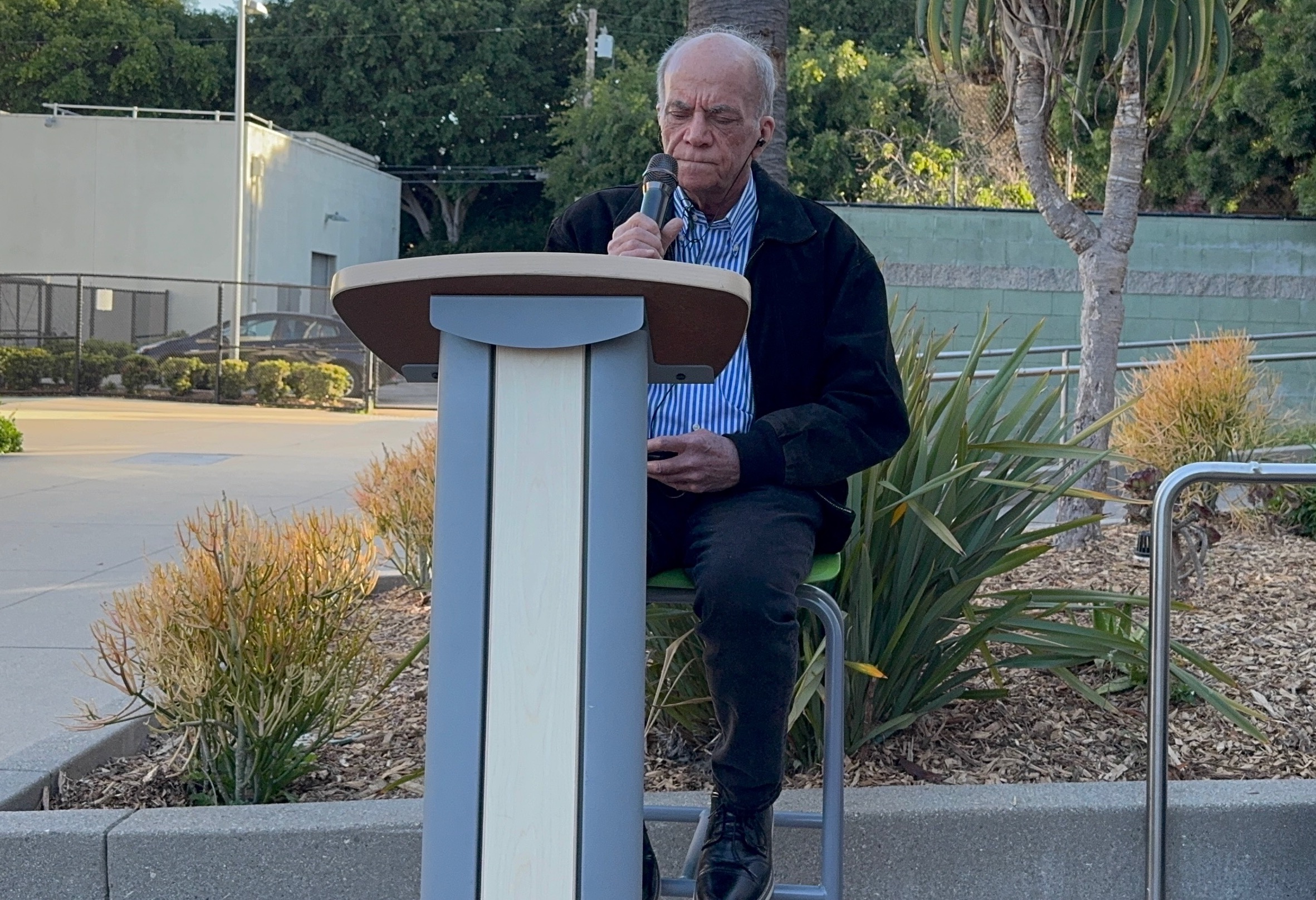
>>> Link to videos
AH, SANTA MONICA: A POETRY READING WITH MAJID NAFICY
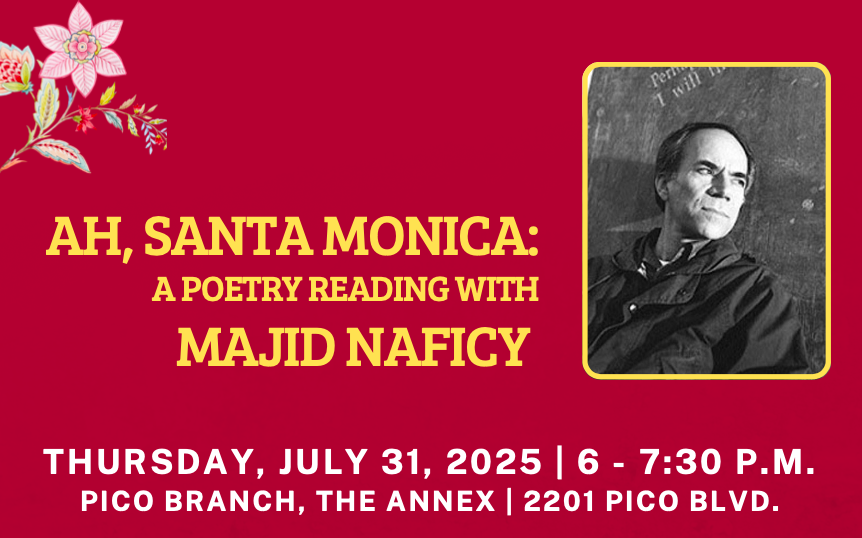
PICO BRANCH LIBRARY, THE ANNEX ROOM | 2201 Pico Blvd, Santa Monica, CA 90405
Join us for a poetry reading by 2025 City of Santa Monica Artist Fellow Majid Naficy. A celebrated Iranian American poet and author of more than 25 books in English and Persian. In addition to holding a doctorate in Near Eastern languages and cultures from UCLA, Naficy is a dedicated human rights and disability advocate, focusing on issues in both Iran and the United States. He has written about disability in literature including on the albino hero “Zal” in Ferdowsi’sThe Shah-Nameh and Jose Saramago’s Blindness. A reception will follow.
This event is a collaboration between Santa Monica Public Library and the City of Santa Monica’s Cultural Affairs Division. For disability-related accommodations call (310) 458-8600 one week prior to event. Secure bike parking is available or ride the Big Blue Bus to the library.
Hopscotch by Fatemeh Shams

HOPSCOTCH
By Fatemeh Shams
Translated by Armen Davoudian
Ugly Duckling Presse
In Hopscotch, Fatemeh Shams crafts a vivid liminal world of Berlin-based poems, a canvas where home and exile blur into an intimate middle ground. Her work, geographically and metaphorically situated between her birthplace in Iran and her current life in exile, evokes a “third space”—a realm of creative liberation and a sanctuary for the play of memories, language, and space. Shams frames this space with tangible metaphors—airports, suitcases, the thresholds of nightclubs—and her poems, like the game of hopscotch itself, leap over borders with a childlike agility, contrasting against the harsh reality of exile. Shams’s poetry invites us to consider our own places of belonging and the potential spaces we inhabit—those rich intersections of language and lived experience.
Fatemeh Shams is the author of two books of poetry in Persian and a critical monograph in English on poetry and politics, A Revolution in Rhyme (Oxford UP). When They Broke Down the Door (Mage, 2016), a collection of her poems translated by Dick Davis, won the 2016 Latifeh Yarshater Award from the Association for Iranian Studies. Her poetry has been featured in Poetry magazine, PBS NewsHour, World Literature Today, and the Penguin Book of Feminist Writing, among other venues. She is Associate Professor of Persian Literature at the University of Pennsylvania.
Majid Naficy's New Book: A Witness for Ezzat
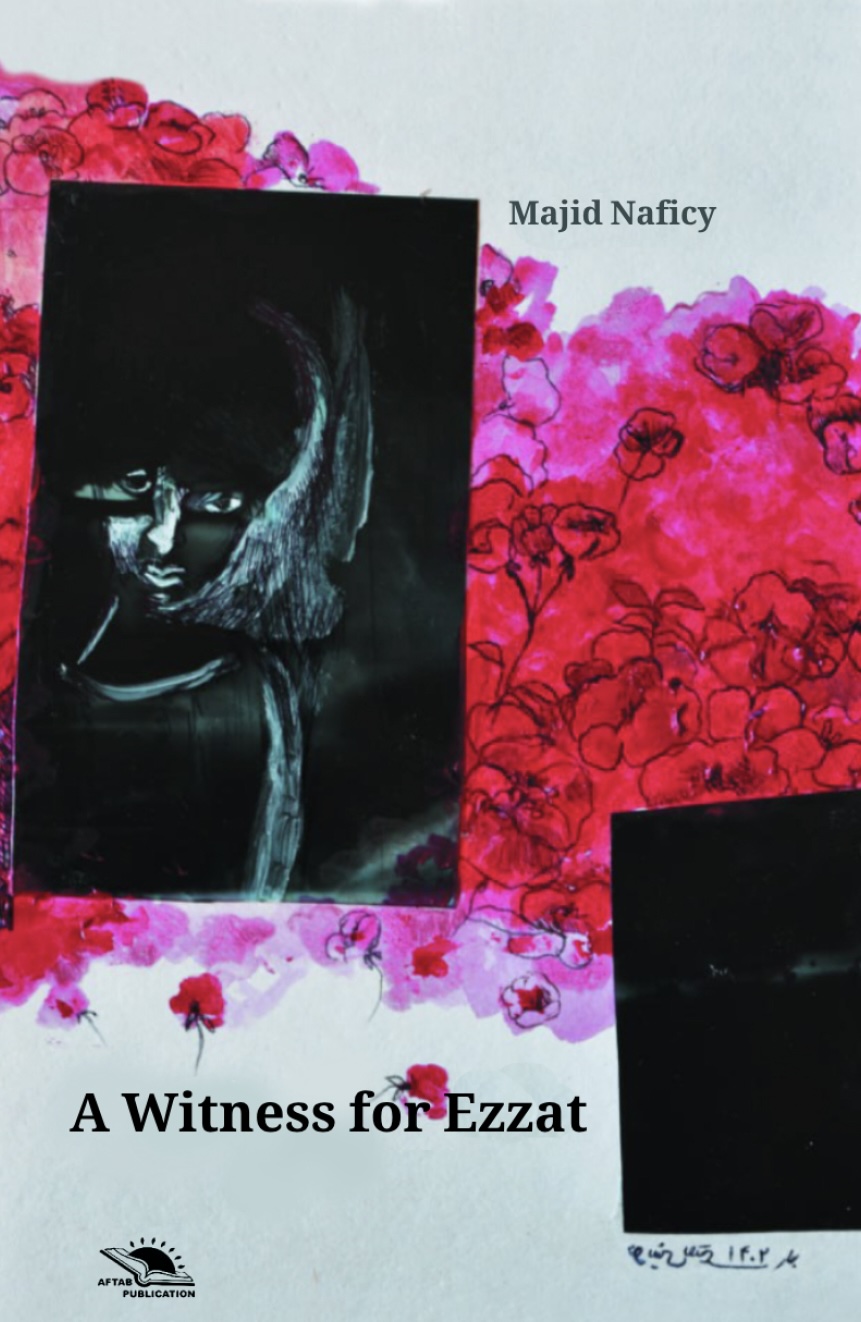
Aftab publication published: www.aftab.pub
A Witness for Ezzat
Majid Naficy
“A Witness for Ezzat” is a collection of thirty poems written by Majid Naficy in memory of his wife Ezzat Tabaiyan executed on January 7, 1982 in Evin Prison and buried in the Khavaran Infidle Cemetery in Tehran.
The American poet, Naomi Shihab Nye, writes about the poem “A Witness for Ezzat”: One of the most powerful poems in the world!!!! Full of love and truth. And sorrow. You are a great poet, Majid. This has been clear since the first poem of yours I ever heard. You are truly a great witness.“
Now the first poem of the book called “Marked Treasure”:
“Eight paces from the gate,
Sixteen paces toward the wall
Which scroll speaks of this treasure?
Oh, earth!
If only I could feel your pulse
Or make a jug out of your body.
Alas! I'm not a physician
I'm not a potter
I am only an heir, deprived,
wandering in search of a marked treasure.
Oh, hand that will bury me,
This is the mark of my tomb:
Eight paces from the gate,
Sixteen paces toward the wall
In the Cemetery of the Infidels.”
To buy this book you can use the following link on Amazon
https://www.amazon.com/dp/B0D53CY9GG
A Witness for Ezzat:
Poetry Collection:
Naficy, Majid: 9798326487452:
Amazon.com: Books
Aftab website:
www.aftab.pub
Aftab Publication’s emails:
info@aftab.pub
aftab.publication@gmail.com
Lava-Lit Lenticular Cloud Crowns Volcano in Spectacular Photo

These bizarre-looking clouds form in stable atmospheric eddies
BY JOANNA THOMPSON
Villarrica is one of Chile’s most active volcanoes. Its Mapuche name, Rucapillán, means “house of the spirits,” and looking at it, it’s not hard to see why. But that isn’t some kind of otherworldly smoke ring wreathing Villarrica’s crater—it’s a cloud.
Lenticular clouds form when moist air flows up a mountain, volcano, or other geographic feature. These obstacles act like rocks in a stream, forcing air to travel around them in a stable, eddying pattern. As water-filled air rises into this current, it cools and condenses into visible clouds that drop after pushing over the summit, “sort of creating a wavelike motion,” says Corwin Wright, an atmospheric physicist at the University of Bath in England. The result is a seemingly stationary cloud that hovers over the landscape like a flying saucer or ominous-looking ring of smoke.
In addition to creating clouds that look like an alien invasion, these eddies play a vital role in global wind circulation. For example, they act as speed bumps that help to slow the Southern Hemisphere’s jet stream. “But you don’t normally see them day to day,” Wright says, “because obviously air is transparent.”
Luckily for photographer Francisco Negroni, a lenticular cloud materialized over Villarrica when it was at its most dramatic for this award-winning shot. After the volcano entered a period of activity, Negroni camped at its snowy base for 10 days as he waited for the right moment. He then set up his camera and opened the lens for a full four minutes to capture enough light. That was enough time to track Earth’s rotation, which makes stars appear as streaks of light even as the volcano’s lenticular crown stays put. For Negroni, the shot was more than worth the effort. Photographing volcanoes “is my life,” he says.
JOANNA THOMPSON is an insect enthusiast and former Scientific American intern. She is based in New York City. Follow Thompson on Twitter @jojofoshosho0
Southern California Poetry Festival 2023 - Saturday, Nov. 18, 2023

5:00 - 6:30 pm: Iranian Poetry in Translation of the Woman Life Freedom Movement
PEN America's Translation Committee co-chair Frieda Afary reads poetry in translation with Sheida Mohamadi, and Majid Naficy, celebrating Iran’s Woman Life Freedom movement.
At Beyond Baroque Literary Arts Center
681 Venice Blvd. Venice, CA 90291.

